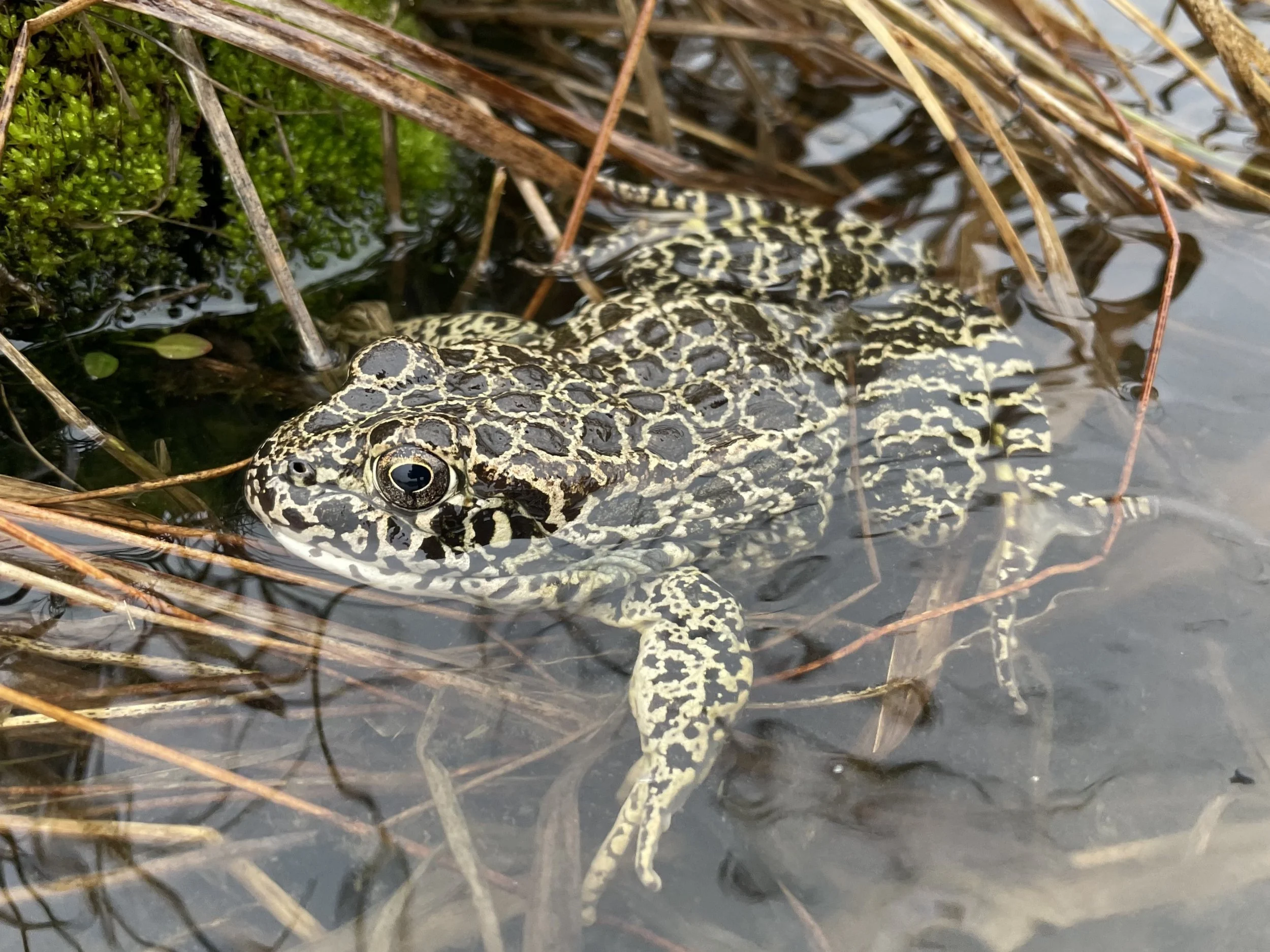Wildlife Watching Wednesday: The Subterranean Crawfish Frog
By: Tom Berg
Of all the different frog species in North America, one of the most unusual and interesting is the Crawfish Frog. These shy frogs spend most of their lives underground, so few people ever see them. Add to that fact that their populations have been decreasing in many areas, and they are even harder to find and see. In fact, crawfish frogs are listed as a species of conservation concern in the states where they live, and they are on the endangered species list in Indiana.
Crawfish frogs are relatively small, ranging in size from 2-5 to 4 inches in length. They are a brownish-tan color, with a complex pattern of dark spots and splotches with light-colored outlines. They have a white belly, and their groin area under the back legs is usually yellow. They have a large head and mouth which allows them to eat fairly large prey. They eat mostly insects and arthropods like beetles, millipedes and spiders, but they also eat small crayfish and juvenile reptiles and amphibians.
Crawfish frogs live in grasslands, prairies and meadows in the central and south-central United States. Parts of Texas, Louisiana, Mississippi, Missouri, Kansas, Arkansas, Oklahoma, Illinois, Indiana, Tennessee and Kentucky are where they are most often found. They only live in grasslands where upland crayfish burrows are present, too.
Terrestrial burrowing crayfish are essential to the survival of crawfish frogs, since the frogs spend most of their lives (10-11 months of the year) underground in crayfish burrows. During the springtime the frogs emerge from their burrows and make their way to vernal (temporary) wetlands and pools to find a mate and lay their eggs.
After the breeding season they return to their home burrows and stay there or very close to it for most of the rest of the year. Once they find a crayfish burrow that fits their body, they usually keep using it for the rest of their life. These home burrows help them escape predators like owls, herons, foxes and raccoons, and they are even safe from prairie grass fires while they are underground. They are real survivors!
The photo of the crawfish frog shown here is courtesy of the Indiana DNR.
Have you had a great out experience? Join Global Outdoors and write a review to tell everyone about it! We’re building the home for trusted reviews of outdoor experiences, outfitters, and guides


